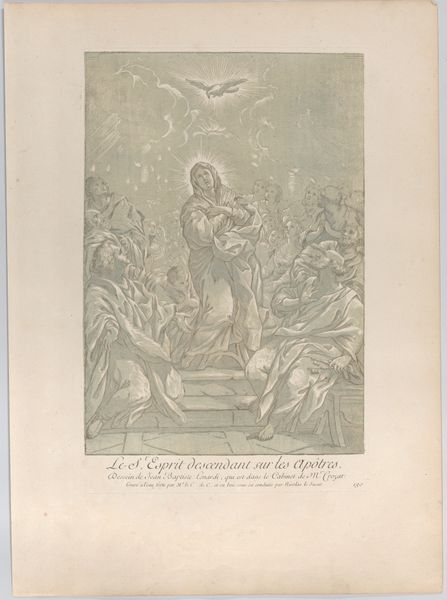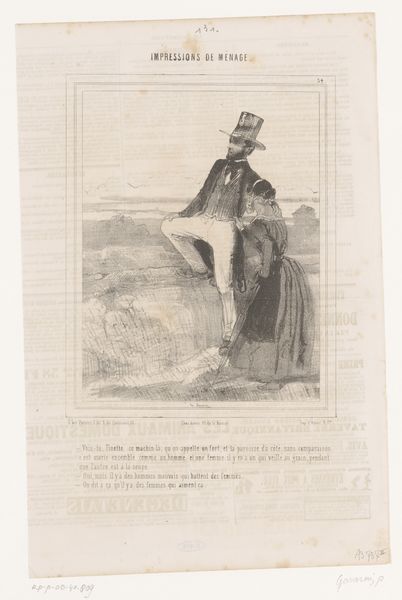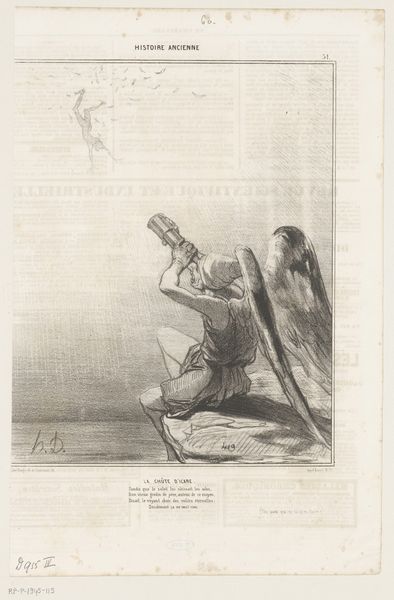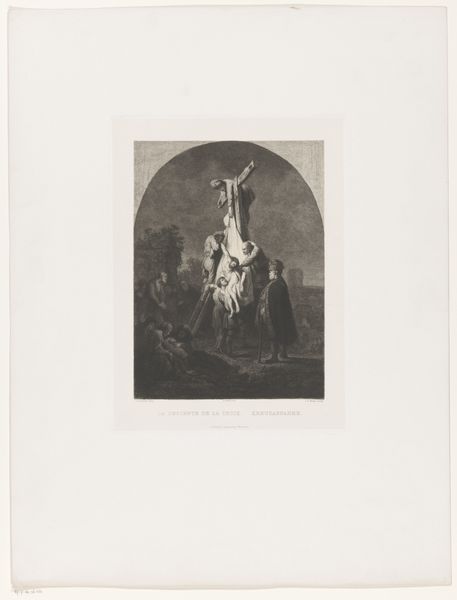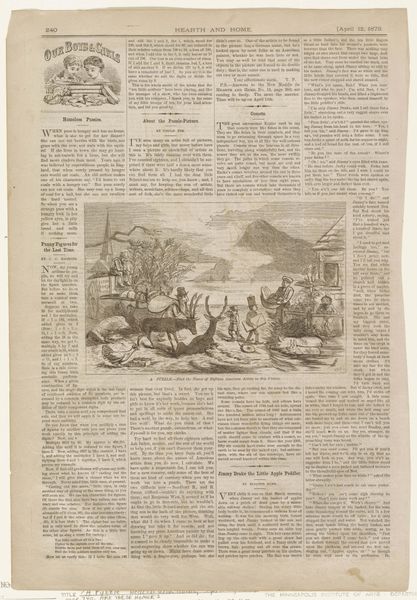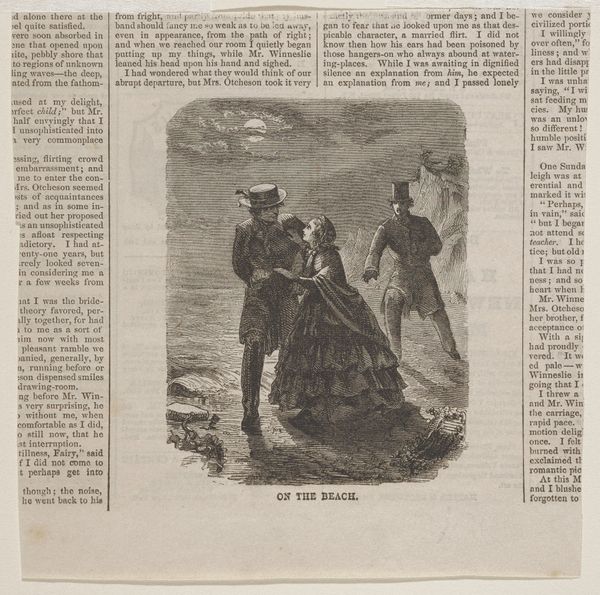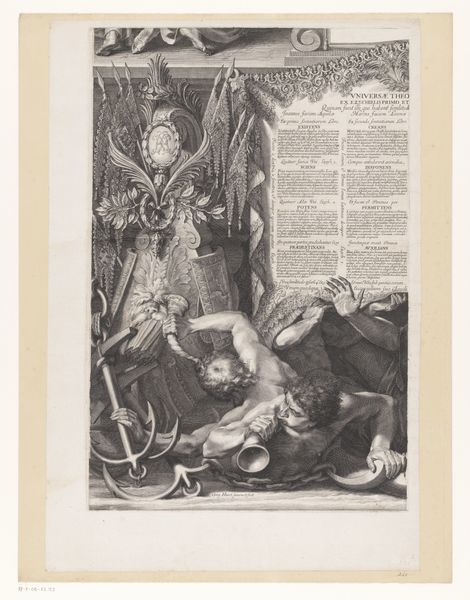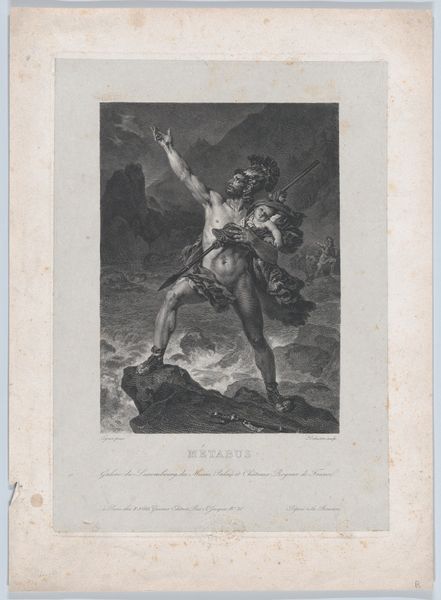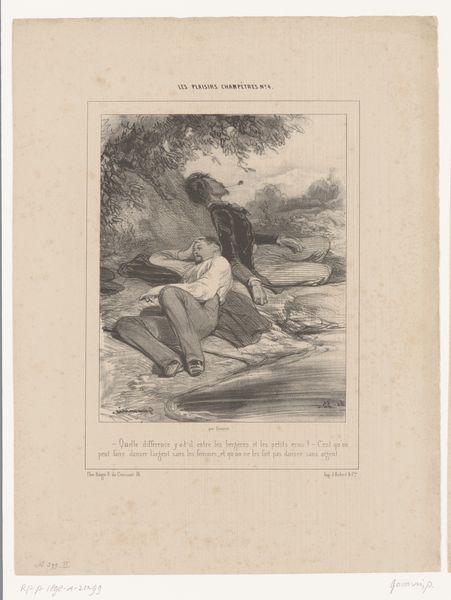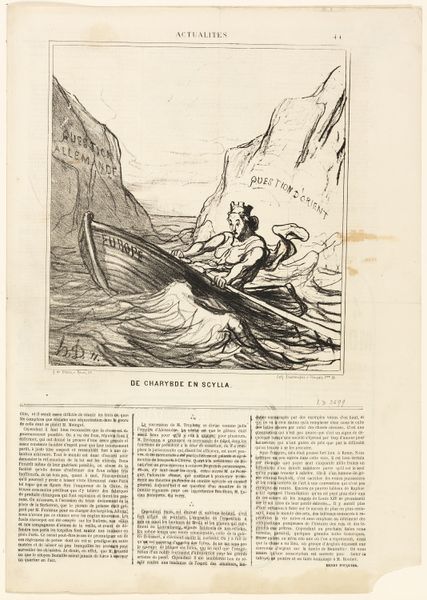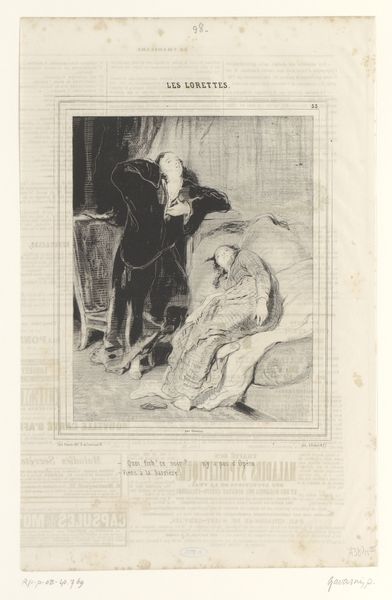
Dimensions: height 408 mm, width 291 mm
Copyright: Rijks Museum: Open Domain
Curator: Here we have "Apparition of an Angel to People on a Roof during a Flood," an engraving from 1879 by Stéphane Pannemaker, after Gustave Doré. The scene is intense. Editor: It's overwhelmingly bleak at first glance. The water dominates, and there's a strong sense of desperation clinging to those figures on the roof. The angel is barely visible through the torrential sky, a ghostly presence rather than a reassuring one. Curator: Pannemaker created this image based on Doré's design. The print accompanied journalism and was published for the benefit of victims of floods in Spain. Think of the image circulating during the period, adding another layer of meaning to an already affecting event. Editor: I’m curious about the economic impact of natural disasters, both then and now, which directly affected the working class disproportionately. How was the wood sourced, prepared, engraved, and eventually disseminated for viewing? Who was producing this relief image for a mass audience, and under what conditions? These details add crucial insight. Curator: Precisely. By all accounts, relief came very slowly in the wake of natural disasters and it was almost always insufficient. The angel in this print, an ostensibly benevolent figure, feels almost powerless against the flood's magnitude. Doré frequently represented marginalized communities; in his work, hope always exists with struggle. How much were these engravings going for? And how was this distributed and collected to the community affected? Editor: Knowing that it was tied to flood relief emphasizes labor's connection to crisis, consumption, and the materiality of social consciousness. Was this print made quickly as the water was receding? And were there enough materials, distributors, or people left to accept the materials? Curator: Indeed, and it raises profound questions about art's capacity to act as a catalyst for societal change and comfort, or how gender, identity, and history affected marginalized communities' experiences with environmental disruption. I appreciate that, as an ending point. Editor: The stark lines really evoke the desperation and, you're right, the agonizingly slow process of disaster relief during times when resources might already be short. A powerful reminder of materiality amid catastrophic change.
Comments
No comments
Be the first to comment and join the conversation on the ultimate creative platform.
